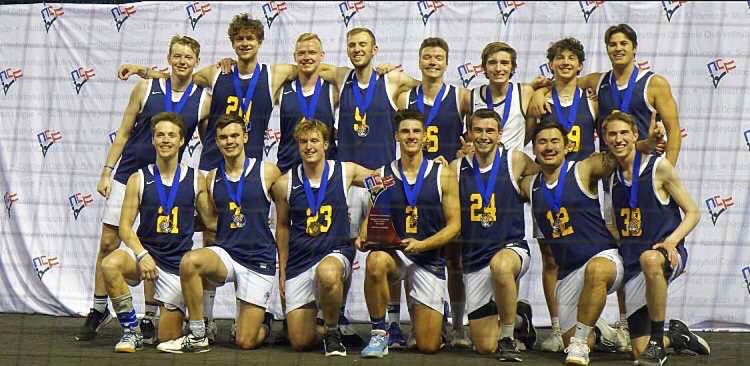 Janie Boschma
Janie BoschmaWhat is nearly 100 years old, brown and fuzzy and has bright red lips?
Give up? Think back to your childhood toy box, or maybe to the TV shows you used to watch, and you might remember the sock monkey, a stuffed brown monkey with a white face and blood red lips.
Though he has never owned a sock monkey, sophomore Matt McNish said he remembers them from children’s TV programs when he was growing up.
“They were on TV a lot,” he said.
Junior Abby Walton said her brother had a sock monkey when they were kids.
“I think he still has it,” she said. “I thought it was cool when I was little.”
Mitch Mitchell, the owner of a part-time sock monkey business in North Carolina, sells handmade sock monkeys across the globe.
Mitchell said mothers began making the monkeys out of old Rockford Red Heel Socks during the Depression. The Rockford Red Heel Socks were the first socks ever manufactured after John Nelson, a Swedish immigrant, patented the sock-knitting machine in 1869, according to Mitchell’s Web site. Nelson began producing the red-heeled work socks for farmers and factory workers in Rockford, Ill., in 1890, according to the site.
With the surge in the sock monkeys’ popularity, Nelson began including an instruction sheet for making monkeys with each pair of socks. Fox River Mills took over Nelson Knitting Co. in 1992, but still includes the sock monkey instructions with each pair, Mitchell said.
Though sock monkeys have been part of American culture for nearly 100 years, both Mitchell and Philadelphian artist Mike Geno said they are definitely making a comeback.
“Sock monkey climate is at an all-time high,” Geno said. “A lot of people don’t know what they are yet, so there’s something novel about them.”
Mitchell said he got his first sock monkey in the 1970s, when he was 5 years old. He said he decided to make one himself about seven years ago and then made the Web site for it as a joke.
Since then his business has taken off, with an average of three orders coming in every day, he said.
“I guess it’s just the nostalgic, retro kind of thing,” Mitchell said. “It’s just kind of a funky toy that sticks with you. A lot of people feel the same way, I think. It’s kind of grandma art, but I’ve taken to it a little.”
Mitchell said the majority of his sales come from sock monkey kits that he makes for customers to sew their own sock monkeys. The creativity which each monkey represents is part of what makes sock monkeys so appealing, Geno said.
“They are mass produced but they have no value in the sock monkey world,” he said. “They’re so boring and generic compared to the handmade ones.
“Every sock monkey is unique, no two are made the same. The personality of the person who made them always seems to come through. Because of that, there’s an infinite collection. In the art world, there’s an idea that everything that could be done has been done already. It seems like sock monkeys are not like that.”
Geno, who is also a professor of art at Moore College of Art and Design in Philadelphia, became interested in sock monkeys when his next-door neighbor needed help finding monkeys online to add to her collection, he said. Geno said he found their quirky expressions, personalities and kitsch factor intriguing.
Geno painted a series of 8×10 sock monkey portraits “for fun” that are now featured on his Web site. After posting them online, Geno said the response was overwhelming, and his art was also featured in a sock monkey exhibit as a result.
“They were unexpected. I have a tendency to paint things that people wouldn’t consider serious subject matter,” he said. “I’m drawn to things that are less traditional. I’m often inspired by my environment.”
Geno said he especially enjoys the fact that sock monkeys are a unique part of Americana folk art, even though their popularity has spread globally via the Internet.
Mitchell said he tries to keep his customer base within the United States to avoid shipping hassles, but he has sold his sock monkey kits all over the world, including Australia, the Netherlands and England.
Mitchell also designs anatomically correct sock monkeys with the appropriate genitalia. The monkeys are sold separately and in heterosexual or homosexual pairs.
He makes other specialty sock monkeys as well, such as the Incredible Hulk and Santa Claus. However, Mitchell said he usually sticks to the original sock monkey style, because he doesn’t have the time to do more with them.
“I’m always behind,” he said, adding that he has a hard time keeping up with demand around Christmas. “Just keeping up with the orders on the Web site is a lot of work. There’s a lot of sock monkey fans out there.”






rebecca • Dec 16, 2022 at 11:07 pm
Wasn’t he knows as Jocko?